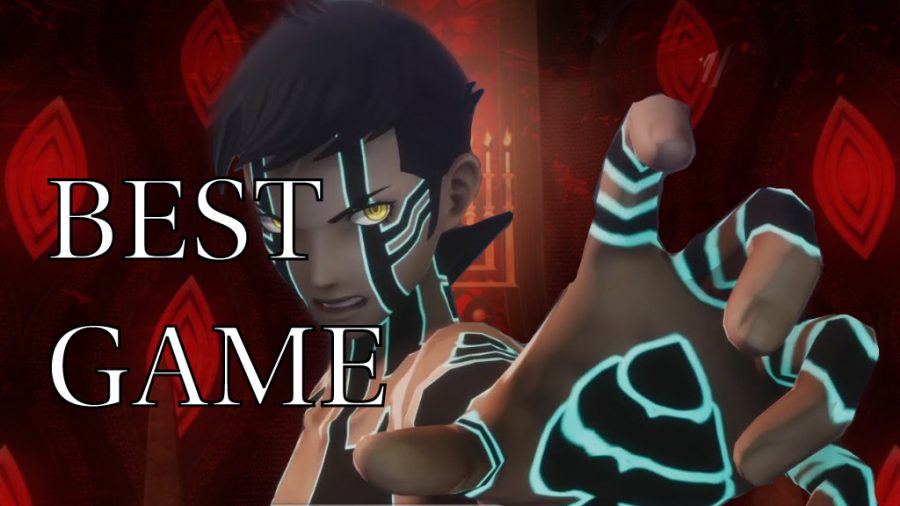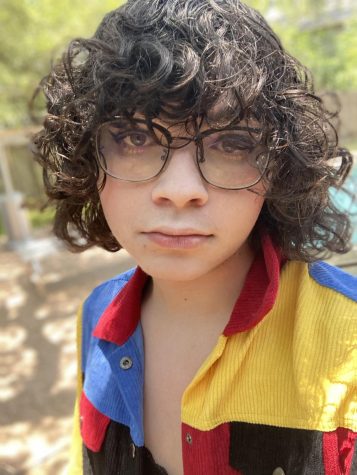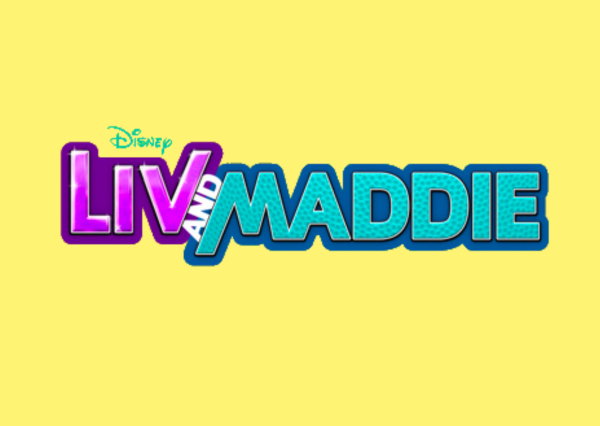Shin Megami Tensei III Nocturne Epitomizes an Apocalyptic Setting
I – Prelude
The early 2000’s were an odd age for video games, given the transitional period the medium was stuck in. SEGA had recently forfeited the console war and focused on publishing games that were once on rival consoles. Microsoft began to dip their toes in the business with the release of the Xbox. The lineage of Gameboy consoles finally came to a close with the Gameboy Advance. Sony’s PlayStation 2 was on track to be the most successful video game console of all time.With all this change, video games as a whole were transitioning from the blocky, polygonal fifth generation of consoles and the graphics they were capable of rendering to revolutionary-for-the-time sixth generation that was popularized by SEGA’s final console, the SEGA Dreamcast. Xbox, PlayStation 2, and Nintendo Gamecube. These were some of the first home consoles released in the 21st century, and it marked the beginning of the transition from Nintendo vs SEGA, to the long lasting battle against “The Big Three,” that still continues to this day.
Take a good look at what people consider “generation-defining” games. A Nintendo Entertainment System game here, a Super Nintendo game there, maybe even a PlayStation 4 game to represent more recent memory. But hidden amongst the mayhem of the sixth generation of video game consoles was a little roleplaying game. Created by the then somewhat obscure developer ATLUS that -for me- represents the sixth generation of video games, and just might be the king of them all. Shin Megami Tensei III Nocturne. A game so good I don’t even know how to describe it.
Now, a role-playing game by ATLUS? PlayStation? A critically-acclaimed title? I’m sure someone jumped up with their hand raised shouting “Persona 5! Persona 5!” To that I say, Persona 5 is all style and 75% substance. But ol’ grandpa Shin Megami Tensei III Nocturne, a nearly twenty-year-old game? That’s what I call a video game. While this might be debatable– believe what other game journalists think or not- an RPG made by the same publisher does not have to compare to the other more praised releases to be considered a quality experience. Shin Megami Tensei III Nocturne stands on its own, and it’s for many reasons that I’d consider it to be the greatest game of all time.
But what is a good game? What even is a game? Some would consider a “good game” as an experience that can’t be replicated in any other medium. Can you take the euphoria of venturing into the open world of Hyrule in The Legend of Zelda Breath of the Wild and replicate it in a book? No. Can you harvest the terrified responses from people who played P.T. in a medium such as a TV show? No. Can you create whimsy the same way that Super Mario 64 when confined to a feature-length film? According to Illumination, apparently you can try. These are all experiences that work best or in some cases, only as video games that players experience uniquely.
The question is, does Shin Megami Tensei III Nocturne do this? Well, yeah. Some might scoff at the idea that a role-playing game can have rich gameplay, citing that it’s nothing more than selecting a menu option to play. It’s almost too easy to take a story-focused experience and adapt it into a show. Just look at the aforementioned avalanche of Persona anime and manga adaptations, proving that RPGs can be functional (maybe not always good) TV shows. However, these are games that are laser-focused on the story, and even if the gameplay is alright, it’s something that can be removed and therefore distill the story elements, meaning that the gameplay could’ve been an afterthought..
Shin Megami Tensei as a series was a slap in the face to this stereotype of gameplay-being-an-afterthought in role-playing games. With its lightning fast battles that force you to claw your way through each encounter, exploiting every little advantage you have, this is style of gameplay that reflects the harsh apocalyptic setting of most of the games. So you see, in order to gauge why Shin Megami Tensei III Nocturne is simply the best, you just need to take a look at the gameplay.
The Megami Tensei franchise introduced the concept of “monster-collecting” role-playing games, essentially story-based games that have a focus on turn-based combat with an incentive to ally yourself with or “collect” as many creatures to assist you on your journey as possible. Sounds familiar? Because if it weren’t for Megami Tensei, the beloved Pokemon franchise wouldn’t exist.
Shin Megami Tensei’s turn-based combat revolves around exploiting the elemental weaknesses of your foes. Where Shin Megami Tensei III Nocturne specifically catches its stride is with its introduction of the Press Turn system. For every weakness hit or critical hit landed, an additional turn will be given to the player. It’s a system that not only eases the tedium of the more generic encounters, but also rewards the player for having an advantage in higher-stakes battles.
Shin Megami Tensei is already notorious for its hard as nails gameplay, and while Shin Megami Tensei III Nocturne continues this trend, the Press Turn system makes you feel like a true hero going up against insurmountable odds. It’s the type of gameplay that I can get excited by just watching, and I can’t say that for other turn-based games.
II – Shin Megami Tensei III Nocturne’s Bottom Line
Here’s the “bottom line.” Shin Megami Tensei III Nocturne epitomizes an apocalyptic setting. Rather than the abandoned cities, Shin Megami Tensei III Nocturne’s setting takes place in a desert wasteland, with chunks of Tokyo strewn about. It’s almost like an inverted planet, presenting a new eerie world to the apocalyptic genre. There is no sky, the only thing to be seen above is the opposite side of this finite desert.
An interesting detail in cutscenes that take place in the open is that you can always see the rest of the Vortex World (the official name of this setting) which serves as a reminder for how limited and bleak this world is. There are no signs of previous human life. No corpses, and the very few survivors- the protagonist included- are no longer human. The only sign of human life are the ghosts of those unfortunate, forever wandering the few chunks of Tokyo that still remain. The landscapes range from empty desert with stray demons and ghosts wandering about, to desolate train stations and shopping centers. Though this wasteland- unfortunately for you- may not be as empty as they seem, to abstract geometric monoliths that make the world feel truly alien.
All of these factors serve to amplify the tone of Shin Megami Tensei III Nocturne’s ethos. You shouldn’t be happy that you survived. You’re going to wander this vast expanse of bleakness stripped of everything. You aren’t a human anymore. You are one of many. Shin Megami Tensei III Nocturne’s setting in tandem with the tooth-and-nail gameplay puts you in the shoes of Demi-fiend, the protagonist. You’ve been kicked down, cracked over the knee of the game itself, and spat out just to try again.
And yet, Shin Megami Tensei III Nocturne’s desolate desert manages to feel so alive. The demons that wander the Vortex World aren’t mindless beasts. They’re people in their own right. They’ll bargain with you, shake you down for money, stick with you until the end of it. One could think that Nocturne’s emptiness makes the rare human interactions so memorable. The first thing you do after setting out into the dangerous wasteland is locating one of your old friends who happened to survive. She goes from the average-high-school girl to a defeated husk who is sickened by the events that transpired. Despite being one of the first cutscenes in this 70-hour game, I still remember it because of the writing, the in-game cinematography, and the voice acting in the HD Remaster. The cutscenes for each of the main cast’s philosophies that they want the next world to be governed by- or “Reasons”- demonstrate the rather abstract ideals in simple ways with memorable imagery. For example, when Chiaki explains her plan to strengthen the world by eliminating the weak and therefore unnecessary aspects, the setting shifts to that of a classroom where the unnecessary chairs suddenly sink away.
Speaking of the main cast, who wants to talk about how despite the formal and unrealistic dialogue, the characters still manage to reflect the struggles of man in the real world, because I sure do. To simply say that “Shin Megami Tensei III Nocturne’s supporting cast goes on a similar arc to that of the protagonist in which they also lose their humanity as a means of hammering the feel of isolation in the air” doesn’t give credit to the true nature of the story. Yes, the cast of Shin Megami Tensei III Nocturne all undergo a change from everyday citizens of Tokyo to emotionless gods amongst demons, making them fit in with the Vortex World’s inhabitants. Yetthis descent into madness is strangely relatable.
You’re watching these normal kids become contorted by these insurmountable circumstances. You want to believe that they’re going to stay true to themselves, that you would stay true to yourself, but the reality isn’t that simple. Everyone is shaped by the world around them, their desires manifest from their experiences and this is prominent through Shin Megami Tensei III Nocturne.
These characters’ philosophies manifest while they roam the Vortex World. Chiaki’s desire for strength manifests after she’s nearly killed by Sakahagi. Isamu’s desire for isolation manifested after he’s imprisoned and put down by other people- or demons. Hikawa is the only guy who has everything figured out before the apocalypse. I’m talking way too much about this game with little to no context, so I may as well summarize Shin Megami Tensei III Nocturne so you don’t have to play it.
Shin Megami Tensei III Nocturne has one of, if not my favorite soundtracks in any video game. Shoji Meguro’s score defines the desolate apocalyptic settings and the intense fights with the Vortex World’s Demons. The ambient tracks perfectly fit the more contemporary environments such as an abandoned medical center, school, or train station, whereas the jolting shredding of an electric guitar gets your blood pumping for a high-battle. There are a lot of battle themes I go back to listen to, but recently, I’ve found myself thinking about the tracks for some of the dungeons. Tracks that remind me of the whole summer break I had ahead of me, aka the time I needed to beat the game. It’s Nocturne’s soundtrack that adds a beauty to the game’s terrifying landscape, and puts an emphasis on the once nostalgic backdrop of an early-2000’s Japan turned Mad Max-looking wasteland. And it’s here that we find the tragedy of Shin Megami Tensei III Nocturne.
III – The Tragedy of Shin Megami Tensei III Nocturne
Shin Megami Tensei III Nocturne follows the Demi-fiend, the protagonist of the story. Most other Shin Megami Tensei games put you in the shoes of a teenage boy getting wrapped up in the conflict between heaven and the underworld. A harrowing story where friendships and alliances are formed or broken based on alignment, old friends become foes, and old foes may become friends. Nocturne is very much the same in this regard, but the character design of the Demi-fiend acts as a foil to the past Shin Megami Tensei protagonists. The previous protagonists featured some semi-realistic features and bulky electronics, emphasizing the fascination with the early internet and computer sciences the first batch of Shin Megami Tensei games had. The Demi-fiend is the complete opposite. Shirtless, little-to-no protection, almost inhuman looking with those jet black tattoos and that large horn protruding from the back of his neck. What I’m getting at is that the Demi-fiend- and therefore the player- endures a different fate playing Shin Megami Tensei III Nocturne than any other Shin Megami Tensei game. Other Shin Megami Tensei games focussed on the three alignments; Order, the authoritarian but peaceful world. Chaos, a world of limitless freedom and potential with little safety being guaranteed. And finally, the neutral path, the best and worst of both alignments where you might end up losing more good qualities than both order and chaos guarantee.
As stated before, Shin Megami Tensei III Nocturne’s alignments are more based on philosophy. Yosuga; a world made up of the strong where the weak are eliminated without question, Musubi; a world where the individuality of the people and solitude and isolation is the name of the game, and Shijima; the world of silence, harmony without self or passion. If you were to have played other Shin Megami Tensei games, you’d find that the best option is neutral, as it often represents the true ending of the story, and is often the ending the game provides specific instructions to obtain. Sure, you can side with the alignment you genuinely agree with, but if you want to see the most-interesting ending for the game’s world and characters, you’d best go with neutral. Shin Megami Tensei III Nocturne’s “neutral” route is the Reason of Freedom, where humanity is given the opportunity to follow their own path, and choose a “Reason” of their own.
The Freedom ending is a cop out, and that’s the point. If you choose the Freedom route, you’re rewarded with an ending that is almost a slap in the face to the 70 hours you just invested. The world is reverted back to normal- and looks just like the prologue of the game- those simpler times. It’s almost like saying all the cool stuff you just saw as “all just a dream.” This is my reward for following the neutral path? This is my reward for not being tempted by my friends’ problematic philosophies? Yes. And the fact that it’s a cop out makes the reward so much better. Where did “freedom” get humanity in the previous world? The prologue of the game elaborates on occult happening and riots in the streets of Tokyo, the world as the characters know it is in ruin, and it’s time for it to be reset to a better alternative, those alternatives being the Reasons. The Freedom ending is essentially an endless loop. What’s stopping the main characters from discovering their Reasons in the real world, committing the atrocities they committed in the Vortex World with demons in a similar vein in Tokyo with regular humans? Who’s to say that the world won’t be thrown into the limbo-like Vortex World again- and who’s to say the protagonist will be lucky enough to be there to survive? Congratulations. That’s your neutral ending. It’s such a cop out- and that’s why it’s not the “true” ending of Shin Megami Tensei III Nocturne.
The True Demon Ending. It’s pretty puzzling to some- myself included- but I’ve boiled it down to it being a juxtaposition to the other “true endings” of previous Shin Megami Tensei games. If you manage to make it to the end of the game and do the extra Labyrinth of Amala dungeon, you’re rewarded with one more alternative; rejecting the Reasons of every character- including the Reason of Freedom- and following the devil himself, acting as his champion. Much like previous neutral endings, the player doesn’t have to make the decision of which alignment to side with, and can instead go with the “best alternative.” Once again, this is the tragedy of Shin Megami Tensei III Nocturne.
Can a genuinely good-hearted player be rewarded for beating Shin Megami Tensei III Nocturne? The answer is no. A “good-hearted” player who follows their instincts that fights for the good of humanity is likely to obtain the aforementioned Freedom ending, which is Nocturne’s equivalent of taking the easy way out. Any other player striving to achieve the “best” or “canon” or “true” ending is likely going to have to do some research, and their reward for sheepishly following what every fan- and developer of the game- considers the true ending is one where the Demi-fiend fully rejects his human roots, his glowing eyes blending into the army of demons that flank him, becoming- as I said before- “one of many.” That is how Shin Megami Tensei III Nocturne objectifies an apocalyptic setting- by making the ending that the average player is most likely to achieve a cop out, and by making the “true ending” one where the player guides the Demi-fiend astray from humanity, thereby making him no longer human. That is the tragedy of Shin Megami Tensei III Nocturne. A “happy ending” that is nothing more than a surface-level reward that masks the bleak and dense conclusion.
IV – Play Shin Megami Tensei III Nocturne
And that concludes Shin Megami Tensei III Nocturne. Is it worthy of being called the greatest video game of all time? Probably not. Far too few people are going to even consider experiencing it with turn-based RPGs’ ability to put people to sleep. It’s probably just an acquired taste- the gameplay at least. It’s hard to articulate what makes it the best for me. I could end by saying some generic tagline such as “Shin Megami Tensei III Nocturne isn’t a game, but an experience,” or “Shin Megami Tensei III Nocturne is a cult classic that deserves your attention,” or the tried-and-true “Shin Megami Tensei III Nocturne makes you feel like a second year highschool student half-demon wandering an endless desert,” but there’s only one thing I can say that’ll in-turn convince you that this game is the best;
Play Shin Megami Tensei III Nocturne, you coward.







